Clearly evident in Air Chief Marshal BS Dhanoa’s statements was the fact that the threat from both China and Pakistan, including a possible two-front war is real. The emphasis was on the need to quickly reach the strength of 42 combat squadrons from this near all-time low of 33. The 15 years transform roughly to 2032 when, if all goes well, the IAF will have its authorised strength. A closer analysis will show that it will be possible only if all dreams come true and all plans move on centre-line. The ground reality is that the IAF is in a crisis situation on this count.
Since 2001, China’s arms exports have increased by 95 per cent, making it the world’s sixth most important arms exporter…
Air Chief Marshal BS Dhanoa, Chief of the Air Staff (CAS), Indian Air Force (IAF), speaking at the Air Force Day Parade on October 08, 2017, said that the IAF was prepared to fight a war at short notice. He said that the IAF assets were not used during the military ‘surgical strikes’ but the IAF was capable of ‘full spectrum operations’. He warned Pakistan that India had the capability to “locate, fix and strike” targets across the border that are not only for tactical nuclear weapons, but also for “other targets across the border.” According to him, the IAF had the ability to fight a two-front war with China and Pakistan, though the possibility of such a war was low. “The IAF had 33 combat squadrons with 16 to 18 planes each and would take at least 15 years to deploy its authorised strength of 42 fighter squadrons; but its existing fleet was mission-ready”, he added. “We need 42 squadrons to carry out full spectrum operations, but it doesn’t mean we can’t fight a two-front war. There is a Plan B,” he said. The CAS said a batch of Rafale fighters from France and single-engine warplanes to be built in India will enhance the Air Force’s operational capabilities.
Clearly evident in these statements was the fact that the threat from both China and Pakistan, including a possible two-front war is real. The emphasis was on the need to quickly reach the strength of 42 combat squadrons from this near all-time low of 33. The 15 years transform roughly to 2032 when, if all goes well, the IAF will have its authorised strength. A closer analysis will show that it will be possible only if all dreams come true, and all plans move on centre-line. The ground reality is that the IAF is in a crisis situation on this count.
Changing Air Threat
Air and space power have attained primacy in the last few decades as a means of prosecuting war. Armies and navies across the world are keen to invest more in air power than in their organic systems. The world is engaged in developing counters to very agile and stealthy fighter aircraft with Beyond Visual Range (BVR) weapons and the ballistic and tactical missile threat. The September 2011 coordinated air attacks on the US by terrorists hijacking airliners and making suicide attacks against ground targets, added a new dimension to air threat. The proliferation of inexpensive Unmanned Air Systems (UAS) has added a cheap but potent weapon in the hands of many. The threat of an aerial attack launched from space today is also real. Fighter aircraft, surface-to-air missiles and space-based weapons are the main counters to all air threat. Tackling air threat is the greatest challenge to any nation.
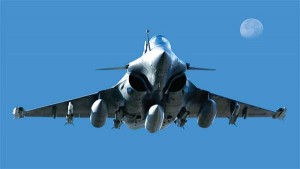 Fighter Bomber, the Main Instrument
Fighter Bomber, the Main Instrument
The fighter-bomber aircraft remains the main instrument for prosecuting air war and conversely also for air defence. In addition to creating air superiority for unhindered operations of surface forces, it has the capability to deliver lethal and accurate aerial weapons and expenditure on the fighter fleet consumes a major part of the defence budget. The main characteristics of fighter aircraft are agility, super cruise, stealth, multi-function Active Electronically Scanned Array (AESA) radars, network-centric systems, integrated glass cockpits, fibre-optics data-transmission, multi-spectral sensors, fused situational picture, helmet mounted sights, and Precision Guided Munitions (PGM). Fighters strive to have ‘first-look, first-shoot, first-kill’ ability. Modern fourth-plus generation fighters are the F-22, F-16 Bock 70, Rafale, Eurofighter, Gripen JAS 39 E/F and Russian Su-35. The just inducting or under development Fifth Generation fighters are American F-35, Russian Su-57 (Indian variant FGFA), Chinese J-20 and J-31. India’s indigenous AMCA will also be in this category. More and more of these roles are gradually being taken over by unmanned or optionally-manned aircraft.
India is the largest market and it is also an emerging power; no one would want India to become independent on this count.
Chinese Fighter Aircraft Programmes
The state-owned Aviation Industry Corporation of China (AVIC) has state-of-the-art aircraft manufacturing programmes in every department of military aviation – fighters, transport, attack and utility helicopters, AEW&C, UAVs and missiles. The J-31, twin-engine, mid-size fighter with AESA radar and stealth features first flew in October 2012. Like the F-35, the J-31 has two internal weapon bays that can each carry two medium range missiles. Stealth fighter J-20 made its public debut when two aircraft did a symbolic fly-past in the last Zhuhai Air Show on November 06, 2016. Some have likened the new fighter to Lockheed Martin’s F-22 Raptor, a big step forward in Chinese combat capability and the drive to close the technology gap. The aircraft is expected to enter service by 2018. Growing domestic capability has enabled China to reduce its dependence on arms imports which fell by 58 percent since 2007. Since 2001, China’s arms exports have increased by 95 per cent, making it the world’s sixth most important arms exporter. The message is clear that China can offer aerospace equipment to other nations and has desire to surpass the United States.
PLAAF Aircraft Strength
The People’s Liberation Army Air Force (PLAAF) is the largest Air Force in Asia and second largest in the world with 400,000 personnel and nearly 2,800 main stream aircraft including 750 state-of-the-art combat aircraft. Its current modern combat aircraft holdings include Su-30 MKK, Su-27, J-16, J-11 and J-10 fighters. They also operate 120 H-6 bombers and 14 AEW&C variants. China is reportedly working on a stealth bomber designated H-18. China spends $25 billion on defence R&D. China and Russia signed a contract for 24 Su-35 (with advanced IRBIS-E AESA radar) and deliveries will begin in 2018. At least a third of China’s budget of $154 billion goes to new acquisitions. The Chinese have also demonstrated a crude anti-satellite system.
Air Threat to India
At the strategic and tactical levels, China’s air power can now achieve a variety of effects. China wants to exploit the advantage of using its tactical/strategic missile force, which is easier to use for offensive than defend against. The PLAAF plans to move the forward edge of battle into enemy territory and it will use air offensive to keep the IAF head-down. Like the IAF, the PLAAF has switched to net-centric offensive air defence and greater reliance on integrated attack. China’s ambition is to build airpower like the USA for an asymmetric advantage. The PLAAF is targeting to be one of the world’s foremost air forces by 2020, made up of at least 1,000 ‘modern’ combat aircraft. Of greater concern is the offensive capability in terms of PGMs and the surface-to-surface missiles. The Pakistan Air Force (PAF) has 22 combat Squadrons with 400 combat aircraft. It is heavily dependent on China for all hardware and support. The F-16, JF-17 and FC-20 will finally be the main types of aircraft in its fleet. Pakistan has been in talks with China to acquire J-31 stealth fighter and with Russia for Sukhoi Su-35 air-superiority multi-role fighter. The PAF remains an air defence centric force with little offensive capability. But Pakistan has an evolving surface-to-surface missile force and India needs to cater for that.
IAF Fighter Aircraft Strength
The IAF’s current aircraft include five squadrons of older MiG-21 (Bis and Type 96) variants that may have to stretch till 2019. The five squadrons of MiG 21 Bison fleet will continue till 2025 with depleting numbers and lower availability of spares. The IAF’s dedicated strike aircraft fleet includes 139 Jaguars that are being upgraded. End December 2017, the MiG-27 aircraft was retired from service. Three squadrons of MiG-29 are being upgraded jointly with Russia. The 57 Dassault Mirage 2000 aircraft are upgraded to Mirage 2000-5 Mk 2 standards with modern avionics and new weapons. 314 Su-30 MKI air-superiority fighters are currently on order and 250 have been delivered till date.
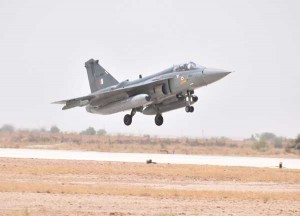 The first squadron of LCA Mk I has got just five aircraft and will be fully formed only by end-2018. The IAF has ordered 40 LCA Mk I aircraft as on date, the Mk I does not meet the IAF’s Final Operational Configuration (FOC) specification requirements. An interim variant evolved by HAL is the LCA Mk 1A which will have the improved version of the Israeli EL/M-2052 Active Electronically Scanned Array (AESA) radar, and an electro-optic Electronic Warfare (EW) Suite. It will also incorporate weight reduction along with easier servicing and maintainability and have a mid-air refueling probe. The IAF has committed for 83 LCA Mk IA. This variant should start being inducted in 2020.
The first squadron of LCA Mk I has got just five aircraft and will be fully formed only by end-2018. The IAF has ordered 40 LCA Mk I aircraft as on date, the Mk I does not meet the IAF’s Final Operational Configuration (FOC) specification requirements. An interim variant evolved by HAL is the LCA Mk 1A which will have the improved version of the Israeli EL/M-2052 Active Electronically Scanned Array (AESA) radar, and an electro-optic Electronic Warfare (EW) Suite. It will also incorporate weight reduction along with easier servicing and maintainability and have a mid-air refueling probe. The IAF has committed for 83 LCA Mk IA. This variant should start being inducted in 2020.
Fighter Aircraft Upgrade
The life extensions and upgrades of some of the fighter fleet have made a big difference to operational capability. The MiG-29 now has multi-role capability and increased internal and external fuel, aerial refueling probe, latest avionics including Zhuk-M radar and new air-to-air missiles. The Su-30 MKI has been upgraded with strategic weapons such as BrahMos cruise missiles and nuclear-capable Nirbhay missiles. Initially 40 aircraft are being modernised with AESA radar, more powerful onboard computers and a new Electronic Warfare (EW) suite. The Mirage-2000 upgrade comprised of the RDY-2 radar, new mission computers, glass cockpit, helmet-mounted sight, EW systems and the advanced MICA missiles. Aircraft life is also being increased by 20 years. Darin III standard on Sepecat Jaguars has recently been cleared. The upgrade incorporates a multi-mode radar, new avionics architecture including mission computer, engine and flight instrument system, solid-state digital video recording system, solid-state flight data recorder and additional functions in inertial global positioning system, better electric power source, an autopilot and a Radar Warning Receiver. It will have a near glass cockpit with two smart multi-function display and Head-Up Display. Life has been extended and will take the fleet to 2035. The decision on the more powerful Honeywell F125IN engines is still held in abeyance. All aircraft will be upgraded by early 2018.
Light Vs Heavy Fighters
There is a continued decision conflict about light versus heavy fighters. Light aircraft are relatively simple with only essential features, and lower cost. Light fighters generally feature high thrust-to-weight ratio, high maneuverability and high reliability. Intentional simplicity also allows buying larger numbers to outnumber the enemy in the air under combat conditions. Modern single engine light fighters include the F-16, JAS-39 Gripen and Tejas LCA. Larger fighters provide the opportunity for more technology, longer range radars and heavier weapons, but are more expensive and often unaffordable. The IAF has to maintain a balance to retain numbers.
The IAF’s New Single Engine Fighter
The IAF requires nearly 500 new aircraft by 2030 to compensate the phasing out and to make good the existing shortfalls. The IAF had plans to replace the fleet of ageing Russian MiG-21s and MiG-23/27s with LCA and Rafale. Delays in the LCA and a truncated Rafale deal have put the IAF back in a difficult situation. It is forced to go for a modern single-engine fighter. On January 03, 2017, Defence Minister Manohar Parrikar announced plans for a competition to select a Strategic Partner to deliver 200 new single engine fighters to be Made-in-India. Lockheed Martin F-16 Block 70 and Saab Gripen JAS-39 E emerged as the possible contenders.
A global tender is likely to be issued in early 2018, with an Indian private company nominated as the production agency. The final government-to-government deal could earliest be signed in 2021. This would mean eight squadrons plus reserves. Both contenders have publically denied full Transfer of Technology. SAAB in any case uses some foreign systems including the engine from the US. The IAF was preparing to issue a global tender, but such statements have come as a rude shock. Only a handful of aviation players have the main technologies in terms of radar, engines, stealth and EW systems. India is the largest market and it is also an emerging power; no one would want India to become independent on this count.
Fighter Fleet Beyond 2030
The figure below is indicative of how the fleet will induct or phase-out in the unfolding years and physically, how the IAF will reach its targeted strength of 42 squadrons by my reckoning by 2035. The fleet of upgraded Mig-29 and Mirage-2000 are likely to extend till 2035 with additional upgrades. Upgraded SU-30 MKI with further upgrades of avionics and weapons the SU-30 MKI fleet will carry on till 2040. The DARIN III jaguars will fly till 2035. Over the coming years, the IAF will induct 40 LCA Mk I and has committed for 83 Tejas Mk IA forming six squadrons of the two variants. The Mk I will later be updated to Mk IA. Six LCA Mk IA squadrons are expected by 2025. Already contracted 36 Rafale aircraft will begin inducting in 2019, with all aircraft ‘IN’ by 2022. The Rafale fleet will fly till 2045.
The HAL Advanced Medium Combat Aircraft (AMCA) which is meant to replace the Jaguars and Mirage-2000 would be available only around 2030.
Four squadrons of LCA Mk II are planned. Mk II with the more powerful 98 kN thrust F414 engine, which is more likely to meet the LCA FOC, will be ready not earlier than 2022. The IAF should have around 100 LCAs in Mk 1A standard and another 80 in Mk II standard flying in 2030. Further orders will depend on progress or the LCA Mk II. The Mk II should see IAF through till 2040. The Indo-Russian Fifth Generation Fighter (FGFA) is still under development. Nearly 150 aircraft are meant to replace the MiG-27 and MiG-29s. The aircraft may be inducted only after 2022 and should see through till 2050. The HAL Advanced Medium Combat Aircraft (AMCA) which is meant to replace the Jaguars and Mirage-2000 would be available only around 2030. The IAF requires 250 AMCAs and may finally choose a single engine fighter aircraft between the Saab Gripen JAS 39 E and the F-16 Block 70. Since the final call will be taken after 2021, the aircraft may induct only around 2025 and then operate till 2045.
Hold Ups, Slips and Confusion
The LCA induction in July 2016 can, at best, be called ceremonial. The first squadron will really form an operational base in Sulur only in 2019. The LCA Mk IA will go through as it is quite straightforward with easy to handle changes. The LCA Mk II is a longer and taller variant of LCA Mk I and with new air-intakes and quite different aircraft with changed weight and C of G and other parameters. It will require extensive testing. With the past track record of the programme, induction in 2025 is a tall order. The CAG Report of 2015 has indicated that there are many holes to plug. Dependence on foreign suppliers for key systems such as engines, radars, EW systems, key avionics, and even ejection seats puts India at their mercy. Low production rate is also an impediment.
The FGFA is another project full of confusion. One gets a feeling that India is half-heartedly into the programme. Officially announced in 2007, it was to have 50:50 work and cost sharing. The ground reality is that today, HAL has only 15 per cent work share in this partnership. In 2010, Russia flew its own single-seat prototype even though the IAF was keen on a two-seat variant. By now, the IAF had assessed the project and given over 40 observations on technology, engine, stealth, maintainability and armaments among others. The Design and Development (D&D) budget has gone well beyond the $6 billion meant for each side. Initially both sides were to acquire 250 aircraft each; the numbers have since been scaled down. The IAF’s last known figure was down to 144. As India was still trying to make up its mind, Russia has started inducting its variant as SU-57 and is demanding $7 billion more for D&D of the two-seat variant for the IAF.
As the world moves towards sixth-generation fighter aircraft, India cannot be left far behind.
Though the Indian government has told the Russians that India was ‘ON’ in the project, physical contracting has still to take place. The grapevine is that the IAF may scale down numbers to 60-80. The DRDO’s ambitious AMCA programme is still on the design board, and considering the LCA track record and lack of core technologies, we may be pitching well beyond our abilities. AMCA operational capabilities and timelines appear very optimistic and unrealistic. While both the Lockheed Martin and SAAB have chosen big Indian industrial business partners and are aggressively marketing the F-16 Block 70 and SAAB Gripen JAS-39 E for the IAF’s single engine aircraft requirement competition, a key hurdle will be the Transfer of Technology which neither is willing to part for the moment. With such uncertainties, the grand plan till 2035 may hit many bumps on the way.
Alternative Options
In view of the delays and uncertainty in LCA Mk II, FGFA, AMCA, some alternative options may have to be exercised. 200 single engine aircraft would surely make up for delays in LCA and also give higher operational capability. India must seriously revisit the option of increasing the Rafale numbers by ideally manufacturing 90 aircraft through the Joint Venture route. Alternatively, at least 24 more aircraft could be purchased. Failing which, the IAF may even be forced to increase SU-30 MKI by another 40 aircraft. As yet another resort the IAF may consider adding numbers to its existing fleets by purchasing a few more second-hand Mirage-2000 and MiG-29s with reserve life and upgrade them. We may assemble another 20 Jaguars. The IAF fighter fleet serviceability continues to hang around 60 per cent. That implies that out of 800 combat aircraft, only 480 are flying fit. The government approved serviceability for operational planning is 75 per cent. If the IAF were to achieve this figure, it would add 120 additional serviceable aircraft. It would mean adding six squadrons. The main reason for low serviceability is the non-availability of critical spares, some of which may have gone for repairs. A one-time investment on spares could cost Rs 10,000 to 15,000 crore.
R&D and Indigenisation
The DRDO’s overstated capability and repeatedly long delayed timelines of the LCA programme have greatly affected the IAF’s acquisition plans and in turn, operational capability. DRDO, Ordinance Factories, and Defence PSUs have not delivered sufficiently in the last seven decades. Undoubtedly, the LCA programme helped India master, fly-by-wire, glass cockpit and composite material technologies, but core aircraft technologies are still only on paper. Pure scientific knowledge has not converted into substantial end-products. These organisations have not moved with the times and have serious structural limitations. Strategic divestment of these assets with Veto powers with government may improve performance and ease acquiring technologies. India has to increase funding for defence R&D well beyond its current $6 billion, bulk of which currently goes in salaries.
On an average, a mid-size fighter aircraft will cost $50 million. To acquire even just 15 squadrons over next decade, $14 billion will be required just for new aircraft.
Weapon Holdings and Force Multipliers
While it is always most glamorous to talk of fighter fleet numbers, but a critical aspect of operational ability is the weapon holdings. While IAF re-builds its fighter Squadrons, it must build up its inventory of Precision Guided Munitions (PGMs), cruise missiles, BVR and Close Combat missiles and Surface-to-Air Missile systems, including the Anti-Ballistic Missile system. The weapons inventory should be for at least 20 days of intense war. The IAF needs to triple its UAV fleet which will give value for money in operational returns. To take on China, or for a two-front war, the IAF requires at least 20 air refuelers and 20 AEW&C aircraft, many times more than its current strength.
Way Ahead
As the world moves towards sixth-generation fighter aircraft, India cannot be left far behind. If we can succeed in space and automobile sectors and be a leader in software, India has all the building blocks to master aircraft building technologies. It is time to get our act right. In the meantime, the defence of India from the air cannot be at the mercy of lower indigenous technologies or slow decision making for acquiring the minimal operational capabilities. All hurdles for the IAF to quickly reach the 42-squadron strength must be removed with national resolve. Increasing numbers of Rafale and SU-30 MKI fleet could be a viable immediate solution. We must target out-of-the-box solutions to improve fighter fleet serviceability to at least 75 per cent.
Accelerating indigenisation and procurements would be required. To replace the overdue for phasing out squadrons and to make good the shortfall of nine squadrons would require large allotment of funds. On an average, a mid-size fighter aircraft will cost $50 million. To acquire even just 15 squadrons over next decade, $14 billion will be required just for new aircraft. Weapons and ground infrastructure will add up to much more. The Union Budget 2017-2018 had $53 billion earmarked for defence. 90 per cent of the $18 billion earmarked for new acquisitions was required for committed liabilities of payments for earlier procurements. To make good the modernisation gap, a much higher defence budget, at least 2.5 per cent of GDP up from the current 1.65 per cent for about a decade is required.




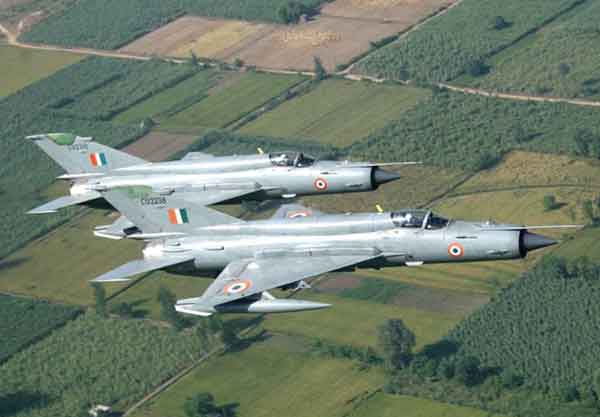
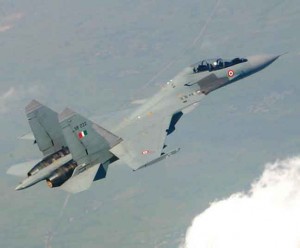
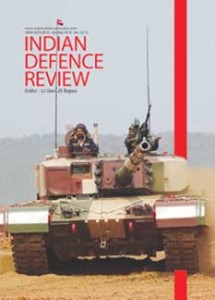
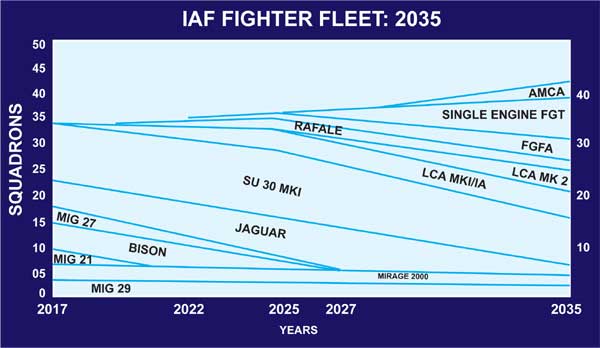
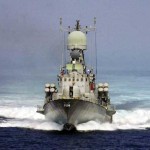
India continues to recycle its decade old RFIs with only analysis paralysis to show for it while diminishing its offensive capability depleting its armaments on land air and sea while drastically falling way behind its enemy to the north. The situation is not any better in the department of defence where a general malaise seems to have to set in post the appointment of nirmala sitharaman. The make in india effort is struggling to breathe while the drdo is being crushed under its own weight. It would be a safe bet to say that prospects for improvement look pretty grim for the next decade as well. Wake up call anyone?
The bean counters in IAF and rest of India should stop counting beans. Planes are not the only part of India’s defense. At this stage of development India has other weapons/options to defend itself.
India should nurture its talent and provide jobs and opportunities to its own people so that they can design and develop their own planes and armed drones.
The next war is going to be fought with unmanned robots(planes, submarines, missiles, etc).
Build more SU30’s, buy more Rafale’s and manufacutre Tejas on a war footing. That is all that is needed. The next war will be fought with missiles and planes will be very vulnerable. Best they can do it to fire without crossing the border so hardly matters how sophisticated they are beyond a certain point. And who came up with the magic number of 42 squadrons anyway ? Chinese air force is very large and with the advanced anti aircraft missiles which all sides have, this number means nothing. Planes are needed to supplement the missiles once we start running out of them during an intense war. Other than that, not much a plane can do that a missile can’t do much more cheaply and safely.